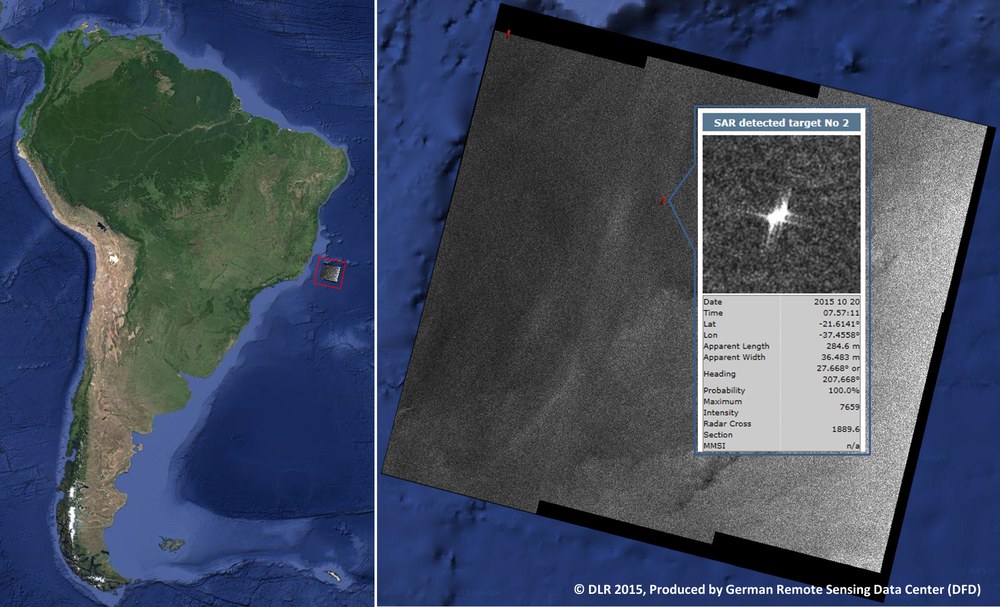“Live” from an Earth Observation Satellite – Worldwide
In only 13 minutes from satellite to image, in only 18 minutes to a ready-to-use earth observation product. For the first time, the transmission of remote sensing data using a laser beam and subsequent processing in near-real-time was demonstrated at EOC.
Live transmission is everyday routine. But what is unproblematic for a football match cannot automatically be applied to earth observation satellites. Most systems now operating can only transfer recorded data when they are near an appropriate ground station. Therefore, satellites have to store their recordings on board until they fly over one. At least, up to now. For time-critical applications it will be possible to convey data in the future using a laser link to a relay satellite that immediately sends it on to a ground station in its reception range.

This “live” transmission was first demonstrated as part of a possible near-real-time application using the Sentinel-1 satellite and TDP1, an EDRS precursor technology on Alphasat. A scene recorded near the Brazilian coast was sent via laser link to the Alphasat satellite and from there with a KA-band microwave signal to the DFD ground station in Oberpfaffenhofen. Immediately thereafter the data went via a conventional network to Neustrelitz for processing and product delivery. After only 13 minutes a satellite image was produced and just five minutes later the derived information product, in this case a map showing automatically detected ships, could be delivered. An outstanding result in light of the huge amount of data involved and the computationally intensive process of generating the image and the data product.
This near-real-time transmission via laser thus meets the requirements of potential users addressing various aspects of maritime security, such as oil dumping, illegal fishing, smuggling and piracy. The first relay satellite of the European Data Relay System EDRS, launched on 29 January, should make it possible in the future to more rapidly supply data sets from Copernicus satellites Sentinel-1 and -2.
Nevertheless, this option will be limited to selected applications. Because of limited capacity and the high complexity of the system, only a fraction of the data collected globally can be transmitted and processed in this manner. Most data will continue to be received by a globally distributed network of ground stations. In order to offer near-real-time services without the need to depend on data relay satellites, EOC is developing processing chains that generate information products right at the local ground stations. Then instead of the original bulk measurement data, “lightweight” customized information products can be supplied in near-real-time.
The link to the Alphasat relay satellite and EDRS puts EOC in the forefront of efficient data reception and the transmission of large amounts of data via a global station network, and thus gives it the capability to meet the needs of a wide range of users.
ESA (ESRIN PDGS, ESTEC, ESOC), TECO (Edoardo Benzis TDP Coordination Office for Alphasat), Eutelsat, Inmarsat as Alphasat operator, DLR institutes (DFD Oberpfaffenhofen and Neustrelitz, GSOC), DLR Space Affairs Management, and TESAT SPACECOM were involved in preparing and carrying out the experiment. EDRS is operated by Airbus DS.

